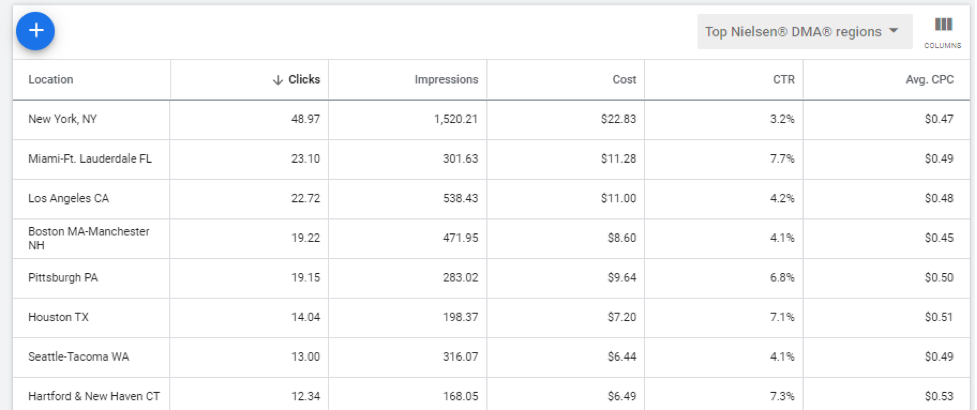Changes to Google Keyword Tools and How to Get the Most Out of Them
Changes to Google Keyword Tools and How to Get the Most Out of Them
What is Google Keyword Planner and how does it work? You've come to the right place if this is a frequently asked question on your search engine. We'll walk you through a quick tutorial on how to use the new Google Keyword Planner tool to conduct keyword research.
You're in luck if you've never used this tool before. If you're a seasoned PPC professional, you'll notice that Google's keyword planner has changed this year.
The keyword planner tool now allows you to find new keywords and conduct searches for words or phrases that are relevant to your company or product. The keyword planner is useful because it shows you how frequently keywords are used and searched for overtime. You'll also get bid estimates for each keyword, which is especially useful if you're just getting started and have a limited budget. You must make an educated decision about how much you should spend per keyword.
Begin your keyword research.
Let's pretend we're starting an afresh pasta business in Florida; these are the steps you'll need to take to conduct effective keyword research. You'll log into your Google Ads account and select "Tools & Settings" from the menu, then "Keyword Planner" from the drop-down menu under "Planning."
Here, we will enter the keyword that represents our business or products. We added "fresh pasta" and the location, Florida.
The yellow highlight serves as a reminder of the location targeting, language, platform, and time frame that were used to examine the data for these keywords.
Google recently added a new beta feature called blue highlight that makes keyword research much easier. Our time spent on the keyword research tool has decreased dramatically as a result of this new feature. This section divides keywords into categories such as branded or non-branded, pasta type, pasta with vegetables, cheese, and other items, making it easier to find the right keyword. We don't want branded terms on our pasta because we're making it from scratch and selling it, so we'd uncheck the stores in the "Brand or Non-Brand" section.
The grouped keyword option was moved by Google, as indicated by the green highlighted section. You can either conduct your own keyword research or choose from a list of auto-grouped keywords.
Organize your search terms
When using keywords, you have the option of grouping them in various ways. You have complete control over how each keyword in your plan is organized. For instance, we've chosen some keywords to promote that represent our company's service, homemade pasta. We wouldn't want to include the highlighted keyword because it's most likely a person looking to make their own homemade pasta rather than buying it fresh. This is one method of keyword research; another is to use groups.
You'll switch from keyword to group view here:
Group views automatically groups all of the keyword themes by groups. For example, here we see that all of the homemade pasta keywords have been conveniently grouped together. This is especially helpful when performing a quick keyword search. We can open up the groups, look at the keywords, and decide if we want to add them to the keyword plan or not.
It's worth noting that some branded keywords may make it past the funnel. The refined keyword tool is still in beta, at the end of the day. Negative keywords can be added to your account for keywords you don't want to advertise for, such as pasta shapes, bon appetit, and hello fresh. You'll add the keywords you want in your campaign to your plan after you've chosen them.
forecasting keyword
Congratulations on your achievement! You've just finished your keyword research for Google Ads. So, what's next?
The keyword planner's "Forecast" section gives you an estimate of how much traffic your campaign will get. You'll notice that the estimate is based on the information highlighted in yellow in this section. Changes in bidding strategy, locations, languages, and other factors can all have an impact on your results.
Now, this is a new update that we noticed and will be interested to see how we can use this new asset moving forward. I’m referring to a new location forecast section in the keyword planner.

We changed location to nationwide in order to see additional location data.
It’s proven time and again that Google's keyword tool continues to be one of the most popular tools advertisers use when performing keyword research. It will be interesting to see what other kinds of beta features Google will keep implementing over time.























![How to Write a Blog Step-by-Step Instructions + Blog Post Templates for Free]](https://blogger.googleusercontent.com/img/a/AVvXsEjlF-BMbOsWXilL66FnVYoAxhrCwtoe-5cD_NEs1s8jx_7CrEjyHObk19BAz2TNEDa0p5smmjTBlF1Ueo9nQfE5MU3FbbUL03eynnwfc6dO1xqBli0naY9fjybO151ZgUQn3Zul5Y0zFcsIUnMddk93uuojXlhLUliWouKW3LM3t7eRpnIOIE4MOvU=s72-w640-c-h408)




Post a Comment